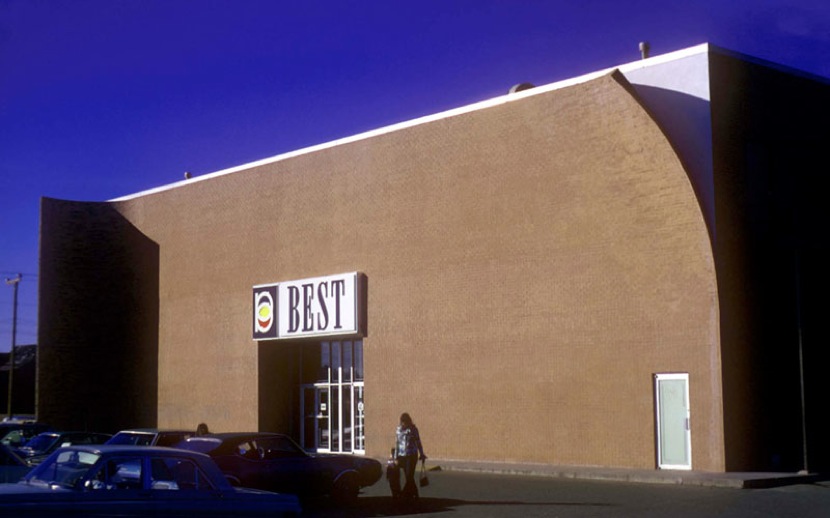Lost Facades of the 1970s Anti-Walmart


(c) SITE
The owners of BEST Products, husband and wife Sydney and Frances Lewis were collectors of 20th century art. It was rumoured that they even traded store merchandise to grow their art collection, most of which is housed at the Virginia Museum of Fine Arts today. In the mid-1970s, they contracted American architect James Wines, founder “SITE” (Sculpture in the Environment) to give nine of their retail stores an avant-garde make-over that would reflect their artistic sensibilities.
(c) SITE

BEST Parking Lot Building designed for locations in Houston, TX and Los Angeles, CA in 1976, a fusion of the asphalt parking lot with the retail building (c) SITE

As a result, they brought the avant-garde to the average American consumer and turned the strip mall into street art…



(c) SITE




(c) SITE


(c) SITE
But then came Amazon and eBay and by 1996, BEST Products was de-listed from NASDAQ. With 169 Best stores, 11 Best jewellery stores across 23 states, and not to mention a nationwide mail-order service, the Lewis family filed for bankruptcy for the second time and closed their last store the following year.

via Failed Architecture
The ‘Peeling Facade’ store lost its peeling wall design to a pawnshop ↑

via Failed Architecture
The only store whose avant-garde design was saved was the “forest building” in Richmond, Virginia, which is now home to the West End Presbyterian Church.
After James Wines witnessed his buildings disappear one by one from the suburban landscape, the architect who still runs his studio today, remarked that, “In France, this would never happen.”
No comments:
Post a Comment